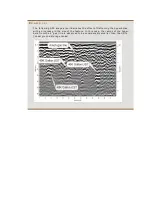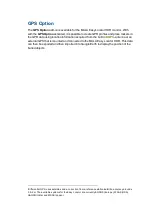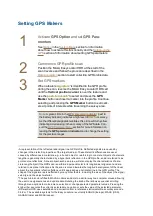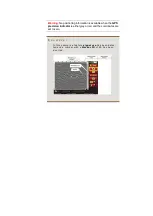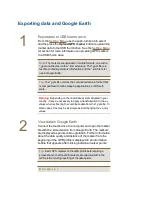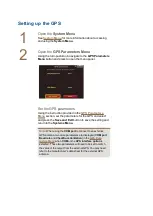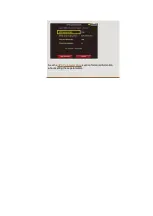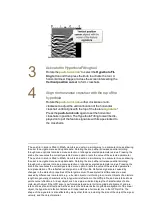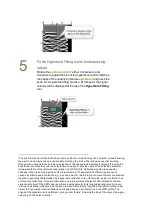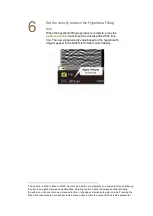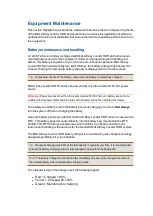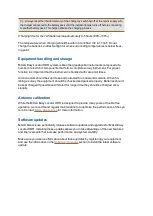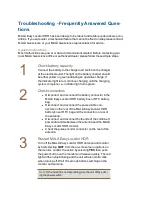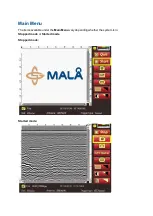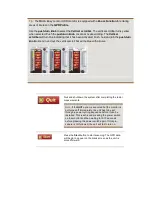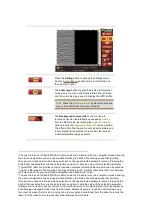
3
Activate the Hyperbola Fitting tool
Rotate the
push-turn knob
1
to select the
Hyperbola Fit-
ting
button and then press the knob to activate the tool. A
horizontal line will appear across the screen intersecting the
Vertical position cursor
to form crosshairs.
4
Align the horizontal crosshair with the top of the
hyperbola
Rotate the
push-turn knob
2
either clockwise or anti-
clockwise to adjust the vertical location of the horizontal
crosshair until it aligns with the top of the feature
signature
3
.
Press the
push-turn knob
again to set the horizontal
crosshairs in position. The Hyperbola Fitting tool will be dis-
played on top of the feature signature with its apex locked to
the crosshairs.
1
The push-turn knob is fitted to MALÅ monitors and acts in a similar way to a computer mouse allowing
the user to navigate menus and update data. Rotating the knob either allows sequential scrolling
through menu options to make a menu selection or changes selected parameter values. Pressing the
knob either executes the currently selected menu option or sets the value of the selected parameter.
2
The push-turn knob is fitted to MALÅ monitors and acts in a similar way to a computer mouse allowing
the user to navigate menus and update data. Rotating the knob either allows sequential scrolling
through menu options to make a menu selection or changes selected parameter values. Pressing the
knob either executes the currently selected menu option or sets the value of the selected parameter.
3
A representation of the reflected radar signal in a GPR profile. Reflected signals are caused by
changes in the dielectric properties of the target medium. These dielectric differences are usual
caused by differences in materials, e.g., a buried object or reinforcing in concrete. Objects of a discrete
length are generally characterized by a hyperbolic reflection in the GPR profile, and are referred to as
point source reflections. A linear object, such as a pipe, will also display the characteristics of a dis-
crete-length object if the GPR scan is performed perpendicular to its longitudinal alignment, and are
referred to as planar reflections. As the scan is moved towards the longitudinal alignment of the linear
object, the hyperbolic refection flattens until it approaches a horizontal line in the GPR profile. The
shape of the signature is also affected by many other factors, including the size of the object, the signal
velocity, and the object material.



